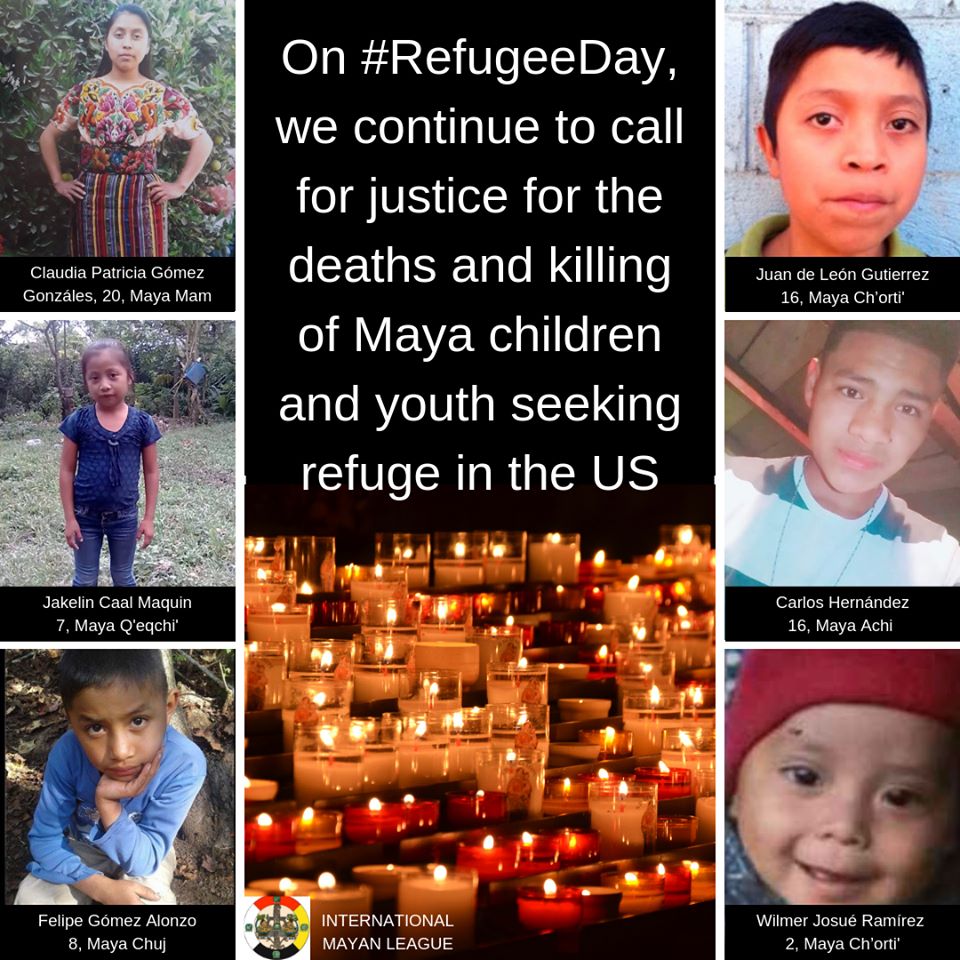
by DGR News Service | Jun 27, 2019 | Biodiversity & Habitat Destruction, Colonialism & Conquest, People of Color & Anti-racism, Repression at Home
Editors Note: the international refugee crisis is driven by war, imperialism, and destruction of the planet. In other words, it is driven by civilization, or “the culture of empire.” DGR is opposed to empire and we see the refugee crisis as a humanitarian emergency. We believe that the best way to fight this crisis is to fight it’s underlying cause, by dismantling civilization. Learn more on the DGR website.
By the International Mayan League
www.mayanleague.org
Washington, D.C. – May 16, 2019 – Today, the International Mayan League denounces the latest victim of death and murder at the U.S/Mexico border, a 2 ½ year-old toddler, a boy from Chiquimula, Guatemala. This tragic loss comes on the heels of the death of 16-year-old Juan de León Gutiérrez of the Maya Ch’orti’ people – also from Chiquimula. For the last year our people have been under constant attacks at the border. Since May 2018 we have lost five lives from Guatemala. First, Claudia Patricia Gómez González (Maya Mam) 20 years old who was shot in the head by a Customs and Border Patrol (CBP) Agent; then 7-year-old Jakelin Caal (Maya Q’eqchi’), and 8-year-old boy Felipe Gomez Alonzo (Maya Chuj) both died in December while in CBP custody. Now, we have lost two more lives. How many more children must die before there is collective outrage, actions, denouncements? How many more times do we need to say this is a crisis specifically affecting indigenous children and youth?
We, indigenous peoples, are the majority in Guatemala and continue to be disproportionately impacted because our basic human rights are denied by the Guatemalan government and all sectors of society. We are forced to flee only to encounter inhumane treatment and human rights violations at the U.S./Mexico border in violation of international law. The Guatemalan and the United States governments must be held accountable for the deaths of our children. Impunity for their deaths is not an option and we demand justice and peace for their families.
Children, explicitly indigenous children, are some of the most victimized. In fiscal year 2019 alone, 19,991[1] Guatemalan unaccompanied children have been apprehended at the border. The number of Guatemalan family units has soared to 114,778, the highest for all the Central American countries[2]. Considering indigenous peoples are the majority in Guatemala, contrary to government admission, we strongly believe that these statistics reflect that thousands of Maya children and families are seeking refuge. Their indigenous identities must be acknowledged and documented.
Each indigenous child whose life has been stolen was forced to migrate because they are the most affected by centuries of structural inequality and discrimination in Guatemala. They often have no future in their rural and extremely impoverished communities. Many have little access to formal education and likely only speak their native language, an additional barrier that hinders their communication with authorities or service providers when migrating. We are outraged by these tragedies and demand the following from the government of the United States. There must be exhaustive, fair and transparent investigations by the Office of the Inspector General, Department of Homeland Security into all the deaths at the border; a dialogue with leaders of the Guatemalan Maya diaspora for the development of humane immigration policies; and recognition and implementation of the U.N. Declaration on the Rights of Indigenous Peoples and the American Declaration on the Rights of Indigenous Peoples as the bare minimum standard for the respect and protection of indigenous peoples’ rights in forced migration.
Almost exactly at the 1-year anniversary of the murder of Claudia Patricia Gómez González of the Maya Mam Nation, we are reliving another nightmare, the death of a toddler. We are tired of being treated as if our lives do not matter. We will not stand idly by as our children are murdered by inhumane policies and practices rooted in hatred, fear, and racism.
[1] https://www.cbp.gov/newsroom/stats/sw-border-migration/usbp-sw-border-apprehensions
[2] Ibid.
The International Mayan League has been working in defense of indigenous human rights for many years, and since last year, trying to raise awareness that most of the children, youth, and families coming from Guatemala are indigenous. They are a Mayan women-led grassroots organization working directly with and for their people, and are entirely volunteer-based.
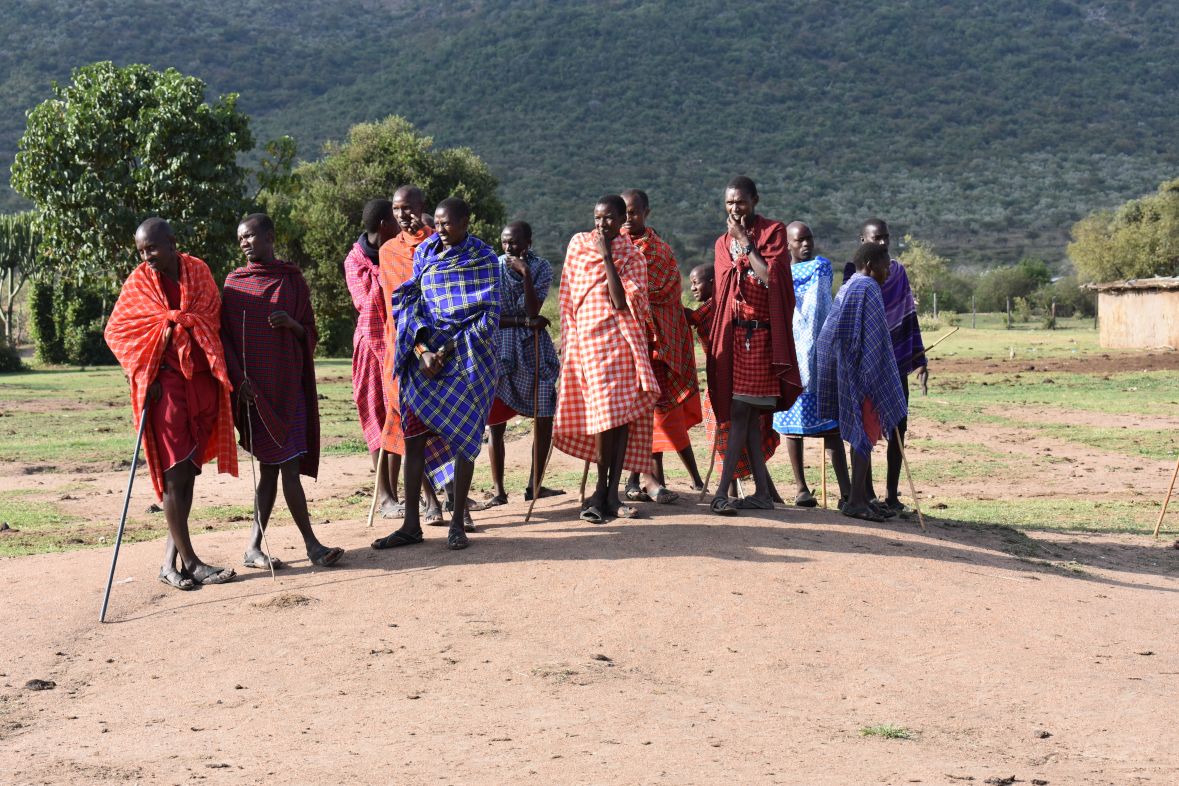
by DGR News Service | Feb 13, 2019 | Colonialism & Conquest
by Rudolph C. Rÿser / Intercontinental Cry
Ever since the German Nazis committed horrendous mass murders of Jews, homosexuals, Roma, and Catholics, many commentators, analysts and scholars have made the mistake of associating “genocide” with “executions and gassing” of people en masse.
The originator of the term “genocide” attorney and author Raphael Lemkin’s analysis essentially explains this error when his analysis points to how the Holocaust is not a synonym for genocide, but the consequence of Nazi imperialism and Colonialism in Europe. While the massive murders by the Nazi government was a horrific case of human destruction the genocide had already begun before the killings. Read from Lemkin’s book, Axis Rule in Occupied Europe (Washington, DC: Carnegie Council, 1944) on page 79 how he describes genocide:
Genocide has two phases: one, destruction of the national pattern of the oppressed group: the other, the imposition of the national pattern of the oppressor. This imposition, in turn, may be made upon the oppressed population, which is allowed to remain, or upon the territory alone, after removal of the population and the colonization of the area by the oppressor’s own nationals.
In other words, when a distinct people is systematically occupied by an outside population with the intention of replacing that population with the invading people under the instrumentality of a government or other organized agent monopolizing violence, that process is genocide. All events after the occupation—the Colonization—are the result of the initial genocide.
Scholars claim that there have been no fewer than 181 “genocides” since what they describe as the “beginning of genocides” in 1945–that is, instances where human beings have been massively killed with the intention of destroying that human population.
The Center for World Indigenous Studies is conducting a study of “Genocides against Fourth World Peoples” to learn about the extent of genocide (in the Lemkin sense and in the latter-day scholars’ sense) committed against Fourth World peoples and what alternatives exist to establish justice and prevent occurrences of genocide.
By simply examining the continental figures for Africa, the Americas, Asia, Europe and the Middle East gathered by contemporary scholars tabulating the killings of groups by particular perpetrators we find that 156 Fourth Nations have been invaded with the resultant killing of an estimated 12.482 million people between 1945 and 2017.
Up to 58 UN member state governments and the militias they supported were responsible for all 156 invasions and ultimate killings of Fourth World peoples.
ESTIMATED POST-GENOCIDE KILLINGS FROM 1945-2017
| CONTINENT |
PEOPLE KILLED |
FW NATIONS OCCUPIED |
| Africa |
7,153,400 |
77 |
| Americas |
544,000 |
15 |
| Asia |
3,953,500 |
34 |
| Europe |
400,000 |
12 |
| Middle East |
431,100 |
18 |
| TOTALS |
12,482,000 |
156 |
© CWIS 2018
Our initial finding is that “governments” (Republics, Dictatorships, Empires, Kingdoms) commit the vast majority of genocides in both the Lemkin and the latter-day scholars’ sense.
According to our estimate, UN member states committed an average of 51% of all 181 incidents of genocide counted by contemporary scholars. That figure alone is astonishing, since invasions and killings of Fourth World nations account for about 86% of all “genocides” counted by contemporary scholars since 1945.
Clearly by these numbers alone, cultural genocide and massive killings constitute a major feature of genocide over the last 70 years and beyond. But, curiously, despite the International Convention on Genocide (1948) and the Rome Statute of 2002 that created the International Criminal Court, the cultural genocide of a people in whole or in part has not been prosecuted. And, of equal interest is the fact that not one of the governments responsible for invasions and then killing of Fourth World people has been sanctioned by the international community or any juridical forum.
Ongoing genocides are taking place now in China against the Uyghurs, Iraq against the Yezidi, Madaeans, Zoroastrians, and Assyrians; and against the Rohingya in Burma; and many other nations.
CASE STUDY: THE INDIGENOUS UYGHURS
Many Fourth World nations are suffering under invasion, occupation and killings similar to the Rohingya in southwestern Burmawhat and the Uyghurs. States cannot be permitted to continue the carnage.
Uyghuristan is the homeland of more than 12 million Uyghurs neighboring Mongolia, China, Russia, Kazakhstan, Kyrgyzstan, and Afghanistan. It has been an established nation of people for more than 2,500 years and the peoples’ written history extends to 1,480 BP. According to the TENGRITAGH AKADEMIYESI Uyghur Academy of Arts and Science Uyghurs were identified by Europeans as “Turkic” and referred to as “Taranchi.” The Russians referred to the Uyghurs as “Sart” or “Turk.” That their language is related to neighboring Turkic languages may have been the reason for these misapplied names. The Kuomintang government of China grouped all Uyghurs as part of the 11 million mostly Moslem Hui people who are located in northwestern China. Despite the practice of Islam, they are completely separate peoples.
Since the Peoples’ Republic of China under Mao Zedong and his successors annexed Uyghuristan the Uyghurs have pursued their independence and have frequently attempted to call the world’s attention to China’s cultural genocide against the Uyghurs.
Until China claimed Uyghuristan in 1949, the Uyghur population constituted more than 94% of the total population in the country. China has systematically relocated Han Chinese into Uyghuristan reducing the Uyghur proportion of the total population to a little more than 45%. Effectively the Chinese have committed cultural genocide by invading, occupying and attempted to replace the Uyghur population with its own population. The Uyghur resistance is strong and persistent to the point where the Chinese government as recently as 25 January 2018 began placing Uyghurs in “re-education camps” to force their fealty to the Chinese government. They have imprisoned tens of thousands and, under the veil of “terrorism” as their justification, killed many thousands more.
Yes, 156 Fourth World nations have suffered cultural genocide since 1945 and not one government responsible for invasions and killings of millions of people have been called to account.
Rudolph Ryser is the Chair of the Center for World Indigenous Studies.

by Deep Green Resistance News Service | Sep 29, 2018 | Colonialism & Conquest
by Jo Woodman and Alicia Kroemer / Intercontinental Cry
On September 30, communities across Canada will be commemorating ‘Orange Shirt Day’, an annual event that is helping Canadians remember the thousands of Indigenous children who died in Residential Schools, and to reflect on the intergenerational trauma that was caused by the Residential school system. Similar school systems were also run in the US, New Zealand and Australia with terrible consequences for Indigenous children and communities.
Stswecem’c Xgat’tem First Nation elder Phyllis Jack Webstad founded Orange Shirt Day in 2013, after she shared her childhood experience at the St. Joseph’s Mission residential school in William’s lake, British Columbia.
Residential school staff stripped her of her favourite orange shirt the day she was taken from her family. As Residential school survivor Vivian Timmins said today, “The orange day shirt is a commonality for all Native Residential School Survivors because we had our personal items taken away which was a tactic to erase our personal identity. Maybe it was a piece of clothing, but it represented our memory that connected us to families. Today is a time to honour the children and youth that didn’t make it home. It’s a time to remember Canada’s dark history, to educate and ensure such history is never repeated.”
Alarmingly, that history is being repeated in many parts of the world. According to Survival International, there are nearly one million tribal and Indigenous children across Asia, Africa, and South America who are currently attending institutions that bear a striking resemblance to Canada’s residential schools.
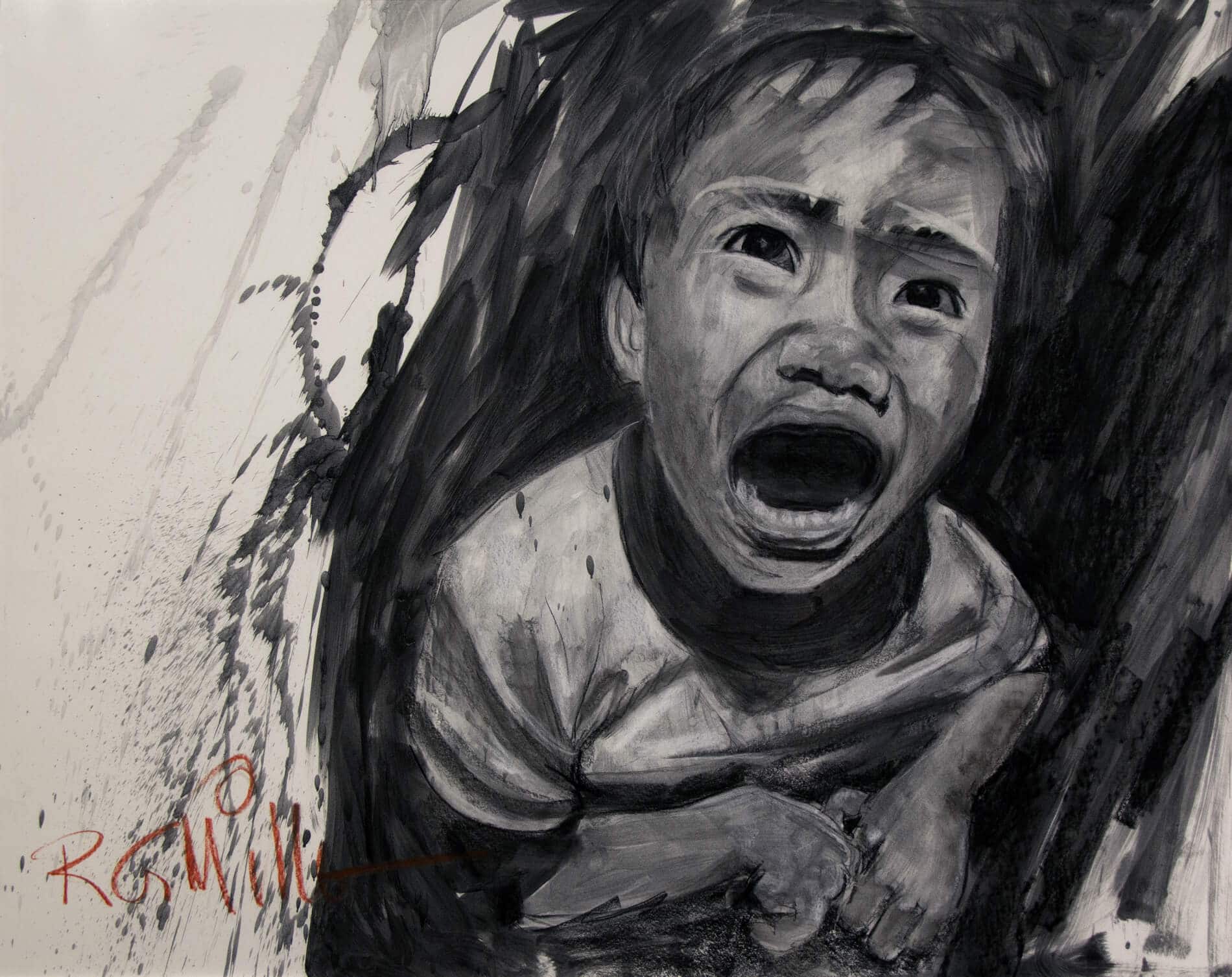
Indigenous artist RG Miller’s haunting autobiographical painting recalls the horrific abuse he experienced at residential school. Photo Courtesy RG Miller
A horrifying legacy lives on
The horrifying legacy of residential schools is being repeated, on a massive scale, because the attitudes and intentions underlying Canada’s residential school system live on.
Tribal and Indigenous children around the world are being coerced from their families and sent to schools that strip them of their identity and often impose upon them alien names, religions, and languages.
Extractive industries and fundamentalist religious organizations are frequently pulling the strings behind these institutions.
One residential mega-school in India—which boasts it is “home” to 27,000 Indigenous children—states publicly that it aims to turn “primitive” tribal children from “liabilities into assets, tax consumers into tax payers.”
Its partners include the very mining companies that are trying to wrest control of the lands these children truly call home.
Parents have described the school as a “chicken farm” where children feel like “prisoners.”
An expert on Adivasi education told us, “Their whole minds have been brainwashed by a kind of education that says, ‘Mining is good’, ‘Consumerism is good’, ‘Your culture is bad.’ Tribal residential schools are institutions which are erasing the autobiography of each child to replace it with what fits the ‘mainstream’. Isn’t it a crime in the name of schooling?”
Without urgent change, many distinct peoples could be wiped out in just a few generations, because the the youth in these schools are taught to see their families and traditions as ‘primitive’, ‘backward’ and inferior to ‘mainstream’ society so that they turn their backs on their languages, religions and lands.
Survivors of Canada’s residential schools are beginning to speak out against these culture-destroying institutions.
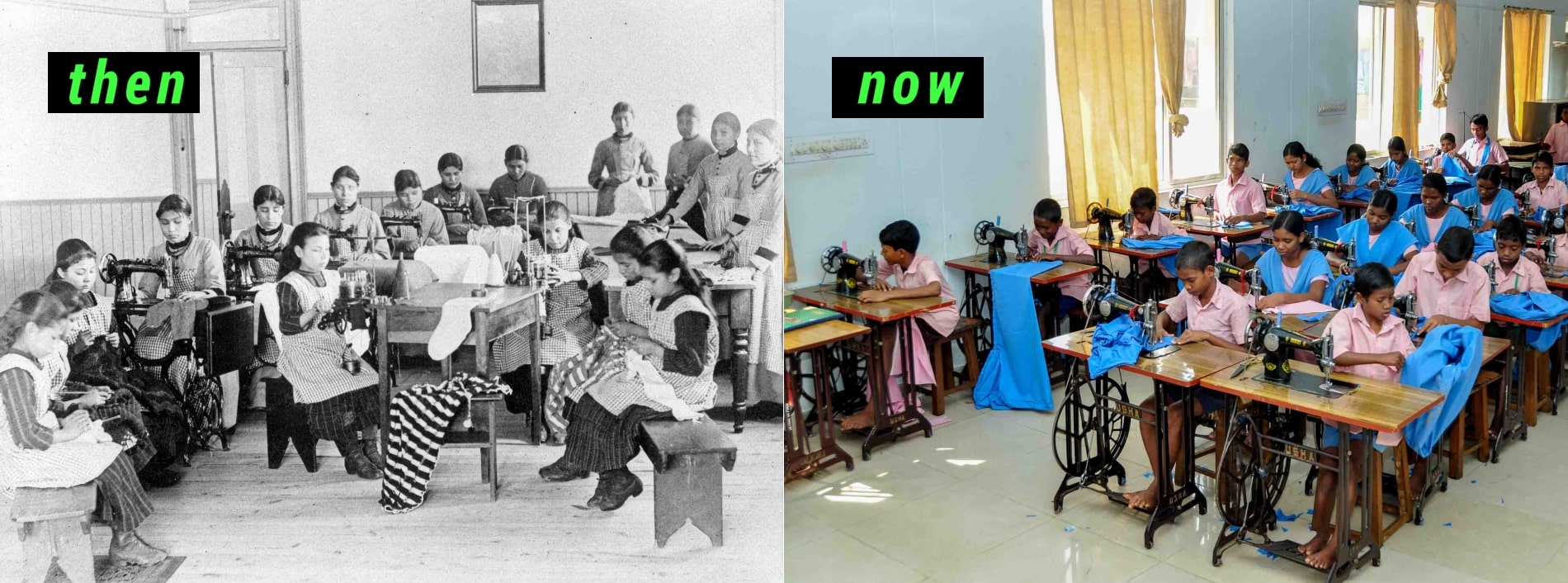
“What’s happening right now at these residential schools in India and beyond is very similar to what happened with the residential schools in Canada”, says Roberta Hill
Roberta Hill is a survivor of the Mohawk Institute in Brantford, Canada, where she was abused by the pastor and school staff in the 1950s and 60s. She sees the strong parallels between her experience and that of Indigenous children in these modern culture destroying schools: “What’s happening right now at these residential schools in India and beyond is very similar to what happened with the residential schools in Canada – this separation of Indigenous children from their family, language, and culture is a very destructive force. My experience at residential school was traumatizing. I was taken from my family at the age of six and put in the school where I experienced a lot of abuse and isolation. If this is happening again now, then there needs to be international attention. It needs to stop or else they are going to go through the same thing that we went through. It will cause irreparable damage – not only to the Indigenous children attending, but to the future generations of that community.”
RG Miller, a prominent Indigenous artist from Canada states: “My horrific experience at Native residential school destroyed my connection with community, family, and my culture. The abuses I suffered there completely broke any sense of trust or intimacy with anyone or anything including God, spouses, and children for the rest of my life.”
Over the past two decades, thousands of residential school survivors have shared their stories of abuse; but there are thousands of other children who will never be able to tell their own stories because they passed away while they were in a residential school. Other children, like Chanie Wenjack, died while trying to escape. The young Ojibwe boy ran away from his residential school in Ontario, trying desperately to reach home, 600 km away. He died of hunger and exposure at the age of 12 in 1966.
Half a century later—and 12,000km away—Norieen Yaakob, her brother Haikal and five of their friends, fled their residential school in Malaysia. The children, who belong to the Temiar—one of the Orang Asli tribes of central Malaysia—ran away to avoid a beating from their teacher. 47 days later, Norieen and one other little girl were found, starving but alive. The other five children died, including Haikal and seven-year-old Juvina.
Juvina’s father, David, told us, “The police said, “Why are you bothering us with this problem?” We felt hopeless. It was only on the sixth day that the authorities began their search and rescue mission for the children. But they told us parents to stay behind. They said if we went in it would just be to secretly give food to the missing children that we were supposedly hiding. They accused us of faking the whole incident to gain attention and force the government to help us more. That was what they thought of us… [Finally] they found a child’s skull and we could not identify immediately whose child it was. We had to wait for the post-mortem. I could not recognize my own child.” The families are currently taking the authorities to court in a case that the world should be watching.
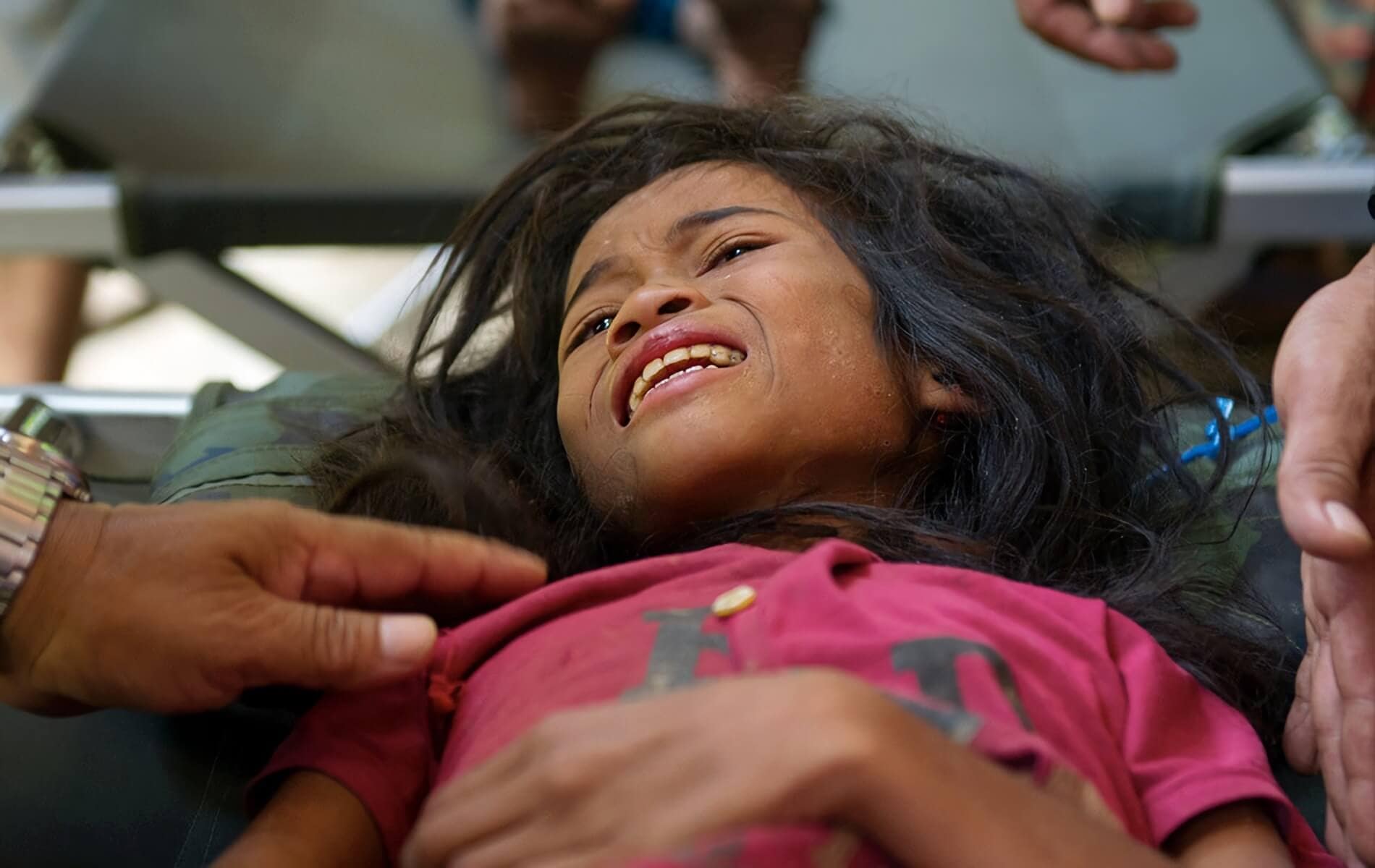
Norieen Yaakob of the Temiar tribe of Malaysia barely survived running away from her residential school. She was found 47 days after fleeing her school; five other children died.
The terrible truth is that Indigenous children are dying in these schools. In tribal residential schools in Maharashtra state in India, over one thousand deaths have been recorded since 2000, including many suicides. With echoes of the traumas experienced in Canada, many parents never learn that their children are ill until it is too late, and they often never know the cause of death.
There are also a frightening number of cases of physical and sexual abuse, very few of which reach the justice system. Government schools across Asia and Africa are often staffed by teachers who have no connection to, or respect for, the communities they serve. Teacher absences are common, and abuse goes unseen and unreported. The potential for devastating damage is extremely high.
Survival International will soon launch a campaign to expose and oppose these culture destroying schools and to demand greater Indigenous control of education, before it is too late for these children, their communities, and their futures.
There is certainly a need for it. These schools endanger lives and strip away identities, but they also deny children the right to choose a tribal future.
The ability of Indigenous Peoples to live well and sustainably on their lands depends on their intricate knowledge, which takes generations to develop and a lifetime to master. To survive and thrive in the Kalahari Desert or to herd reindeer across the Arctic tundra cannot be learnt in residential schools, or on occasional school vacations.
What’s more, in this current age of severe environmental degradation, climate change and mass extinctions, Indigenous Peoples play a crucial role in preserving the world’s ecosystems. They are the best guardians of their lands and they should be respected and listened to if we have any hope of survival for future generations.
Rather than erasing their knowledge, skills, languages, and wisdom through culture-destroying residential schools, we must allow them to be the authors of their own destinies as stewards and protectors of their own lands.

Tribal children in Indonesia learning on their land, in their language. Photo: Sokola Rimba
Dr. Jo Woodman is running Survival International’s upcoming Indigenous Education campaign. She has spent two decades researching and campaigning on Indigenous rights issues, focused on the impacts of forced ‘development’, conservation and schooling on tribal communities.
Alicia Kroemer holds a PhD in political science from the university of Vienna on collective memory and residential schools in Canada, with publications, films, and lectures on the topic. She serves on the board of Indigenous rights NGO Incomindios in Zurich, where she is a human rights educator and UN representative. She also works as a research consultant for Minority Rights Group and Survival International in London, UK. She is interested in allyship, advocating and promoting human rights, with a special focus on Indigenous rights globally.
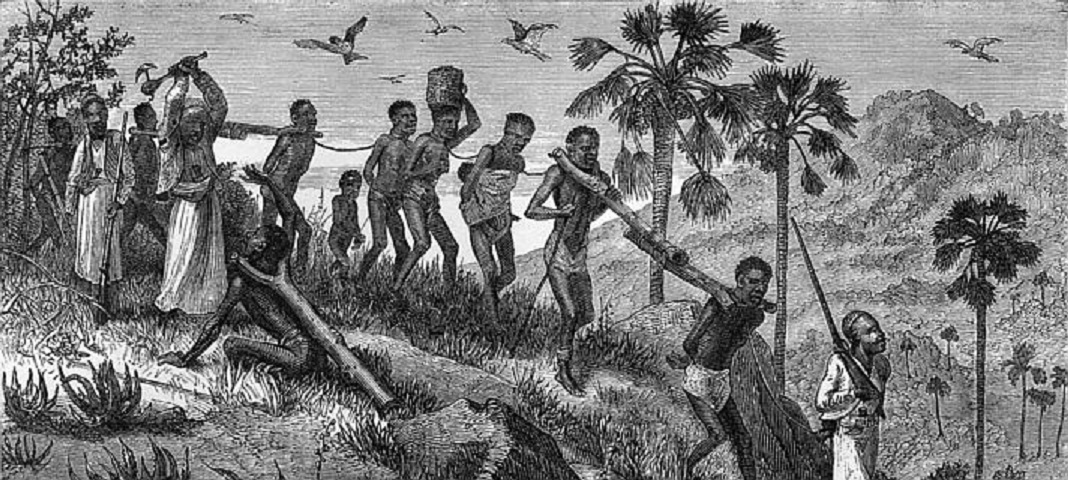
by Deep Green Resistance News Service | Mar 29, 2018 | Colonialism & Conquest
Editor’s note: this is an edited transcript of Derrick Jensen’s talk, which you can listen to here.
What does it mean to decolonize my heart and mind, and how do I go about doing that?
by Derrick Jensen / Deep Green Resistance
Many indigenous people have said to me that the first and most important thing we have to do is decolonize our hearts and minds. Part of what that means is to question every assumption that you ever had about the way life is. Many indigenous people have told me the most important difference between indigenous and western ways of being is that even the most open-minded westerners perceive listening to the natural world as a metaphor rather than a literal action. Indigenous people around the world generally perceive the world as consisting of other beings to enter into relationship with and to whom we have responsibility, as opposed to resources for us to exploit.
“When I look at trees I see dollar bills.”
If you look at trees and see dollar bills, you‘re going to treat them one way. If you look at trees and see trees, you‘ll treat them another way. And if you look at this particular tree and see this particular tree, you‘ll treat them differently still. The same is true of course for women, which is one reason I am so completely opposed to pornography; when I look at women and I see orifices, I‘ll treat them one way; if I look at women and I see women I‘ll treat them another way, and if I look at this particular woman and I see this particular woman I‘ll treat her differently still.
How you perceive the world affects how you behave in the world. So, a lot of the decolonizing is to change unquestioned assumptions that control how you perceive and act in the world.
A young writer approached Anton Tschechow and said he wanted to write a story and he didn’t know what to write. So Tschechow said: “I want you to write a story about a man, who squeezes every drop of slave’s blood out of his body.”
We have been trained since infancy to be slaves to the system. To be addicted to the system. The word “addict” comes from the same root as the word “edict,” and it means “to enslave.” In ancient Rome, a judge would issue an edict, that would addict someone to someone else, that would enslave them.
We are enslaved to the system, and we need to squeeze every drop of slave’s blood out of ourselves. Another way to look at this is to recognize that, as Robert J. Lifton has written about so well, before you can commit any mass atrocity you have to convince yourself that what you‘re doing is not in fact an atrocity, but instead a good thing.
So the Nazis were not committing genocide and mass murder, they were instead purifying the Aryan race. The North American settlers were not committing genocide and mass murder and land theft, they were manifesting their destiny. Today, nobody is killing the planet, they are instead developing natural resources.
I shared a stage with Ward Churchill one time and we were chatting backstage, and I said ”I can‘t believe how stupid the Nazis were to take such careful records of their atrocities, meticulous records of how much gold they pulled from teeth … why would they take such strict records of these terrible actions?” He just looked and me and said, “Derrick, what do you think the GNP is?“ GNP is a very highly detailed description of the conversion of the living to the dead, of the dismemberment of the living planet.
So part of decolonizing is to recognize that things we think are good, like civilization, like industrialism, like developing natural resources, may in fact be quite terrible and atrocious. This is absolutely crucial work. One of the things that happens through this process that is crucial to decolonizing is transfering your loyalty away from the dominant system and toward the landbase. This is pretty much what all of my work is about. Once you transfer your loyalty to the landbase, everything else is just technical, you know, what to do then. But until you do that your loyalty will still be, by definition, with the dominant culture.
When I do resistance radio interviews, I‘m always very clear before the interview that you can be as biocentric and ecocentric as you want. If we‘re talking about the Mississippi River, or talking about the Colorado River, or the Columbia River, I don‘t actually care about agriculture. My loyalty is completely with the river. If the water stays in the Colorado River, I don‘t care if that means that cotton growers will be driven out of business, or that golf courses in Arizona will go dry. Because my loyalty is not with industrial capitalism; my loyalty is with the living planet.
How do we do it? We start to question every assumption. There is a sense in which it‘s very easy and a sense in which it‘s really hard.
The sense in which it‘s very easy is that, like many environmental activists, we begin by wanting to protect a specific piece of ground. But we end up questioning the foundations of western civilization. That‘s because we start to ask questions, and once the questions start they‘ll never stop. So we can ask: why is this land being destroyed? And the answer is usually: because someone is going to make money off of it. Or economic production; it‘s good for the economy. Then you ask: why is most land harmed? Well, it‘s good for the economy.
So then you ask: have all cultures had economies based on destroying their land base? No. And then you ask: what does it mean that you have an economy based on destroying the land base? And then you ask: what is the endpoint of having an economy based on destroying the land base? And of course, the answer is obvious: you destroy the land base, and you destroy the capacity of the earth to support life. As we see.
In that sense decolonizing is really easy. All you have to do is to ask one question. It‘s the same with rape culture. You ask: why was this woman raped? Then you ask: why is any woman raped? Why are so many women raped? Has every culture been a rape culture? And once those questions start, you head back to the roots of the problem. In the case of rape, the patriarchal violation imperative, in the case of civilization, well, civilization’s economic arrangements, and also the patriarchal violation imperative.
In another sense it‘s very hard. You have to give up on everything that brought meaning before. You die, that‘s the point. That‘s a very scary process, and it can be a very painful process, it‘s a process that many of us went through in our twenties. There is that great line by Joseph Campbell: if the signs and symbols of the dominant culture work for you, then there will be a sense of meaning in your life and a sense of accord with the universe. If the signs and the symbols of Catholicism work for you, then you have a 2000 year old path of meaning laid out for you.
If the American Dream works for you, and making money brings you meaning, then you have a couple of hundred years system of meaning set out for you. I would say that meaning is really perverse, but we‘ll leave that. Campbell then says: if those signs and symbols don‘t work for you, then basically you‘ll find your life meaningless, and you‘re set adrift. Then you have to go on what he called a hero journey, and I‘m sorry for the sexism of the language. That‘s the journey, that we all have to find to go through, to find meaning in our own lives.
Life consists of a series of deaths and rebirths. It‘s pretty extraordinary that the central message of the Jesus story is completely missed. It‘s not that Jesus was a real human being who died and then was resurrected; instead it‘s that for a new part of us to be born, an old part of us has to die. This is true in any case. When we are in our late teens and early twenties, we have to die as children to be born as adults. That part is left behind, and a new part emerges. That can be incredibly painful and scary, which is why cultures around the world have had social means by which the young people would be shepherded through that process.
We don‘t have that. We certainly don‘t have any social approval for it. Instead, people are pulled back into the culture at every moment. This culture tries to bring us back through television, through books, through economically forcing you to stay in the system, making you economically dependent upon the system by telling you that you are a consumer, and not a citizen or a human animal who needs habitat. It‘s constantly reinforced. But if you can find another community, a community of people who value living trees over dollars, who value the real world, whose loyalty is with the real world, that can really help this passage.
The really difficult part of decolonizing is that it involves a great definite death and rebirth. A death of faith that the system will work out, a full internalization of the understanding that the dominant culture hates life, and that the dominant culture will kill everything on the planet unless it‘s stopped. That‘s what decolonization feels like; it‘s the death of one‘s loyalty to the system that raised you.
If space aliens had come down from out of space, and were vacuuming the oceans, changing the climate, putting dioxin in every mother‘s breast milk, obliterating the planet and giving us computers, and tomatoes in January, and whatever goodies we want; if space aliens were doing this, most of us would not have a hard time decolonizing because we would see it. But after five, and ten and fifteen generations, people won‘t see it any more.
One of the reasons we‘ve become so stupid about this is because from childhood we pledged allegiance to this culture. We were taught that this culture is more important than a living planet.
Once again, we need to think about this as though it were space aliens who were destroying the planet. Because it doesn’t really matter who is destroying the planet; they are destroying the planet and they need to be stopped.
So for me, the process of decolonizing has, as its very essence, making one‘s loyalty to the real world.
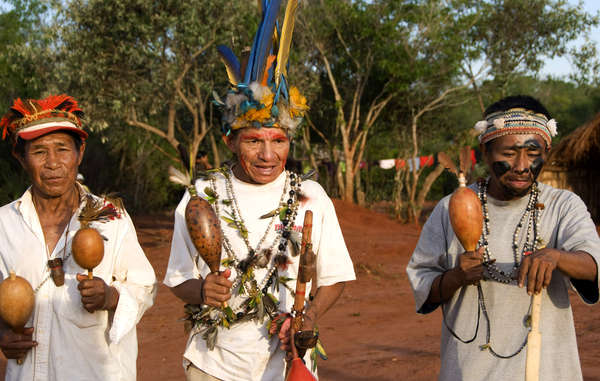
by Deep Green Resistance News Service | Dec 26, 2017 | Colonialism & Conquest
Featured image: The Guarani continue fighting for their land rights despite continuous attacks. © Fiona Watson/Survival International
by Survival International
Ten years ago the Brazilian government signed a landmark agreement with the Guarani tribe, which obliged it to identify all their ancestral lands.
The core objective of the agreement, which was drawn up by the public prosecutors office, was to speed up the recognition of the Guarani’s land rights in the southern state of Mato Grosso do Sul.
However, one decade on, most surveys have not even been carried out and the authorities’ failure to recognize the Guarani’s land rights continues to have a terrible impact on the tribe’s health and well-being.
With no immediate hope of recovering their land and rebuilding their livelihoods, thousands of Guarani are trapped in overcrowded reservations where the prosecutors say there is so little land that “social economic and cultural life is impossible.”
Other Guarani communities live along busy highways or on fragments of their ancestral land, hemmed in by vast sugar cane and soya plantations. They cannot plant, fish or hunt and have no access to clean water.
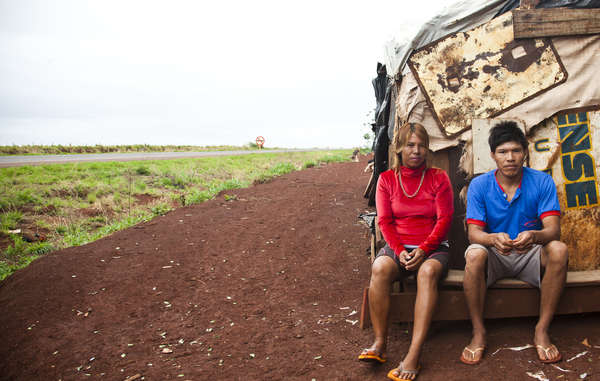
A Guarani-Kaiowa couple sit outside their makeshift roadside settlement of the Apy Ka’y community, near Dourados, Mato Grosso do Sul, Brazil. © Paul Patrick Borhaug/Survival
Health workers report that these communities are suffering from severe side effects of pesticides used by agribusiness. Some communities say their water resources and houses are deliberately sprayed by the ranchers.
A recent study estimated that 3% of the indigenous population in the state could be poisoned by pesticides, some of which are banned in the EU.
Malnutrition especially among babies and young children is common. According to Gilmar Guarani: “Children cry and cannot put up with this situation any more. They are really suffering and are very weak. They are practically eating earth. It’s desperate.”
Mato Grosso do Sul is home to the second largest indigenous population in Brazil, with 70,000 Indians belonging to seven tribes.
Much of their ancestral land has been stolen from them by cattle ranchers and agribusiness, and now they occupy a mere 0.2 % of the state.
John Nara Gomes says: “Today the life of a cow is worth more than that of an indigenous child… The cows are well fed and the children are starving. Before we were free to hunt, fish and gather fruits. Today we are shot by gunmen.”
The despair among the Guarani at the loss of their lands and self sufficient life is reflected in extremely high rates of suicide . In the period 2000-2015 there were 752 suicides. Statistics collected since 1996 reveal a rate that is 21 times greater than the national one. This is probably under-estimated as many suicides are not reported.
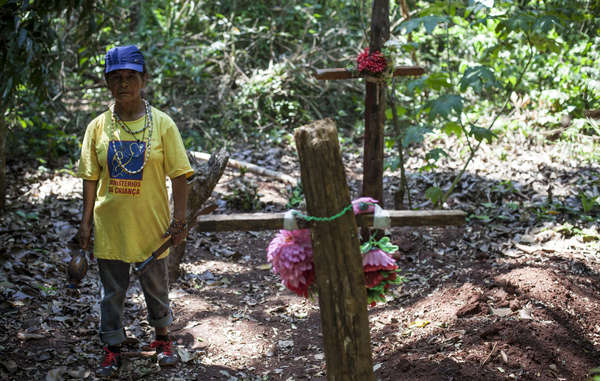
Damiana Cavanha, leader of the Apy Ka’y community, has seen the deaths of three of her children and her husband. She is determinedly planning a reoccupation of their ancestral land where they are buried. © Paul Patrick Borhaug/Survival
The Guarani also face high levels of violence and are constantly targeted by ranchers’ gunmen whenever they attempt to take back parts of their ancestral land. Recent data shows that 60% of all the assassinations of indigenous people in Brazil occurred in Mato Grosso do Sul state.
With a government and congress dominated by the powerful agribusiness sector, the landowners in Mato Grosso do Sul will not cede an inch. Many have resorted to the courts as a delaying tactic, to challenge the identification of Guarani territories. One core Guarani territory has had 57 legal challenges.
Despite this bleak scenario many Guarani vow to fight on: “Brazil was always our land. The hope that feeds me is that our land will be recognized, for without it we cannot care for nature and feed ourselves. We shall fight and die for it” says Geniana Barbosa, a young Guarani woman.











